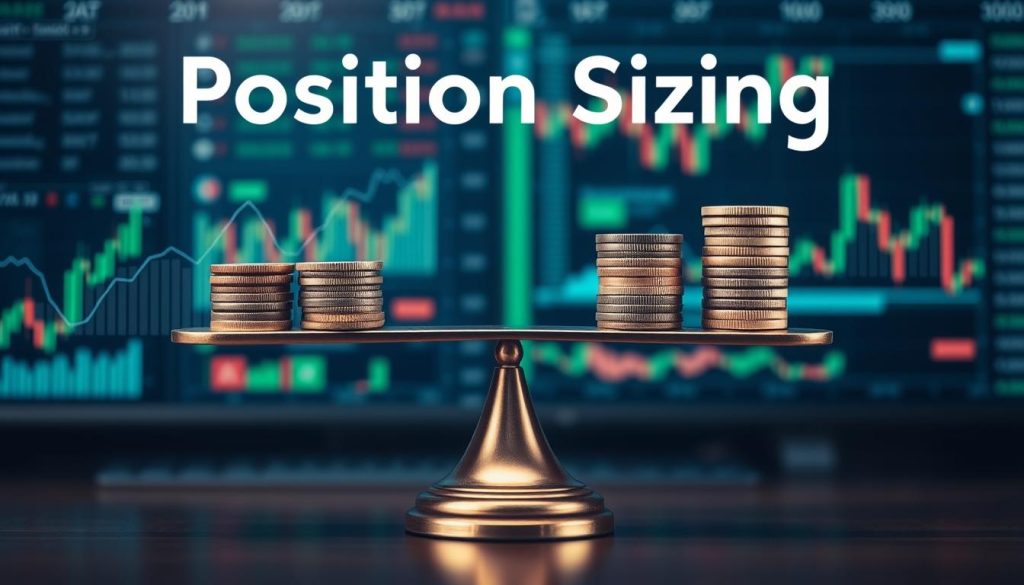Setting Up EAs for Prop Firm Evaluation Success
In the fast-paced world of forex trading, using automated trading systems, or Expert Advisors (EAs), is key to making money consistently. Prop firms are big players in this field. They have high standards for EAs, and traders need to meet these to get a partnership.
This guide will show you how to set up EAs for prop firm evaluations. We’ll cover important steps like understanding trading rules and managing risks. You’ll learn how to make your automated trading system successful.

Key Takeaways
- Understand the specific trading parameters and restrictions imposed by prop firms during the evaluation process.
- Implement effective risk management techniques, including position sizing calculations, stop-loss implementation, and take-profit optimization.
- Ensure your EA is configured to meet the prop firm’s evaluation criteria, including performance metrics and strategy optimization.
- Optimize trade execution speed and reliability to enhance your EA’s competitiveness.
- Develop effective money management strategies to navigate the challenges of the evaluation phase.
Understanding Prop Firm Evaluation Requirements
Aspiring algorithmic traders need to know what prop firms look for during their evaluation. These firms have strict rules, like trading limits and profit goals. Meeting these requirements is key to getting a funded trading account.
Common Trading Parameters and Restrictions
Prop firms set strict rules to test an algorithm’s performance and risk handling. They limit the number of trades, position sizes, and leverage. They also decide which financial instruments are allowed. Following these rules shows your trading discipline and risk management skills.
Maximum Drawdown Rules
Prop firms check the maximum drawdown, the biggest drop in your trading account’s value. They usually set a limit, like 10-20%, to see if you can handle market ups and downs. Keeping your drawdown within these limits is crucial for passing the evaluation.
Profit Targets and Time Frames
Prop firms also look at your strategy’s profit over time. They want to see a certain profit, like 10-20%, in a set period, like one to three months. Achieving these profit goals shows you can make consistent money and manage risks well.
Knowing and following these prop firm rules is vital for algorithmic traders wanting a funded account. By making your EA meet these criteria, you boost your chances of passing the evaluation and starting live trading.
| Prop Firm Evaluation Requirement | Typical Benchmark |
|---|---|
| Trading Parameters and Restrictions | Limits on trades, position sizes, leverage, and instrument types |
| Maximum Drawdown | 10-20% of account equity |
| Profit Targets | 10-20% return within 1-3 months |
Essential Components of a Prop Firm-Ready EA
Creating an algorithmic trading strategy for a prop firm is tough. Your EA needs to be strong, flexible, and good at managing risks. These are key to passing a prop firm evaluation.
A good trading strategy is at the heart of a prop firm-ready EA. It must be tested and fine-tuned to work well in different market situations. Using various strategies, like following trends and finding mean values, helps the EA adjust to market changes.
Risk management is also vital. Your EA should show it can handle risks well. It should have features like adjusting trade sizes, setting stop-loss, and tracking performance. This lets the prop firm see if the EA’s returns are worth the risks they take.
- Adaptable trading strategies that can navigate diverse market conditions
- Comprehensive risk management tools to mitigate potential losses
- Detailed performance tracking and reporting capabilities
- Seamless integration with the prop firm’s trading infrastructure
By focusing on these key areas, you can make an EA that meets prop firm standards. It shows you’re serious about providing steady, managed returns in algorithmic trading.

Risk Management Settings for Evaluation Phase
When setting up your Expert Advisor (EA) for a prop firm evaluation, risk management is key. Properly setting up position sizing, stop loss, and take profit can make or break your evaluation success.
Position Sizing Calculations
The size of your trades is crucial for risk management. You need to balance profit potential and risk. Use advanced algorithms that consider your account balance, risk tolerance, and market volatility.
Stop Loss Implementation
Stop loss orders are vital for risk management. Analyze market conditions and volatility to set good stop loss levels. This protects your capital and lets your trades have room to grow. Avoid tight stops that cause unnecessary losses.
Take Profit Optimization
Take profit levels are also key for managing gains and position sizing. Try different strategies like trailing stops or multiple targets. Find the right balance between risk and reward for your system.
By carefully setting up these risk management settings, you show the prop firm your EA is disciplined. This increases your chances of getting a trading account.
How to Set Up Your EA to Meet Prop Firm Evaluation Requirements
Creating an automated trading system (EA) that fits prop firm standards is key to getting a trading chance. To make sure your EA meets the requirements, follow these important steps:
- Stick to Trading Hours: Prop firms usually set specific times for EA evaluation. Make sure your EA works only during these hours, following the trading schedule they require.
- Pick the Right Instruments: Check the list of approved instruments from the prop firm. Set your EA to trade only those allowed, like major currency pairs or certain commodities.
- Manage Risk Limits: Prop firms have strict rules on risk, like drawdown limits and leverage. Set your EA’s risk settings to match these rules, protecting your account during evaluation.
By carefully setting up your EA’s trading parameters, EA configuration, and prop firm compliance, you’re ready for a prop firm evaluation. This focus on detail shows you can meet the prop firm’s needs and get a trading chance.
“Aligning your EA’s setup with prop firm evaluation criteria is the key to unlocking the door to a rewarding trading partnership.”
Backtesting Your EA Against Evaluation Criteria
When getting your Expert Advisor (EA) ready for prop firm evaluation, it’s key to backtest it well. You need to look at its past performance, check important metrics, and make it better with optimization.
Historical Data Analysis
Start by deeply analyzing your EA’s past performance with historical market data. This gives you a clear view of how it would have done in different market situations. It helps you see what’s good, what’s not, and how to make it better.
Performance Metrics Assessment
Next, carefully look at your EA’s performance metrics like backtesting, historical data, performance metrics, and strategy optimization. These metrics show how profitable, consistent, and risky the strategy is. These are key points for prop firm evaluations.
Strategy Optimization Techniques
After understanding your EA’s performance, use strategy optimization techniques to make it better. You might tweak settings, adjust risk levels, or use advanced algorithms to improve its decisions.
By backtesting and optimizing your EA, you boost your chances of passing the prop firm’s evaluation. This could lead to a successful placement.

Common EA Configuration Mistakes to Avoid
Setting up an automated trading system (EA) for prop firm evaluations is tricky. Even a small mistake can cause big problems. Traders need to watch out for common errors that can stop them from succeeding. These include overleveraging, ignoring slippage, and not considering market volatility.
One big mistake is overleveraging EAs. Prop firms have strict rules on how much leverage is allowed. Going over these limits can get you kicked out right away. Traders must carefully set up their risk management and position sizing to meet the prop firm’s rules.
- Overleveraging can lead to too much risk and big losses, making it hard to pass the evaluation.
- Not paying attention to slippage, or the price difference between expected and actual, is another mistake. Prop firms check how well EAs handle slippage, and poor management can hurt performance.
- Not thinking about market volatility is also a mistake. Prop firms test EAs in different market conditions. An EA that works well in calm times might struggle with volatility.
By carefully avoiding these EA configuration pitfalls, traders can do better in the prop firm evaluation. This can help their EAs succeed in the long run.

“Attention to detail is key when setting up an EA for prop firm evaluation. A small mistake can ruin a good trading system.”
Optimizing Trade Execution Speed and Reliability
In the world of algorithmic trading, speed and reliability are key. To make your expert advisor (EA) shine during prop firm checks, focus on two main areas. These are setting up your virtual private server (VPS) right and tackling network latency.
VPS Configuration Best Practices
Choosing the right VPS is crucial for your EA’s performance. Look for a provider with fast connections, top-notch hardware, and uptime. Here are some tips for setting up your VPS:
- Go for a VPS with the newest CPUs and lots of RAM to meet your EA’s needs.
- Make sure the VPS is near the trading servers of your target prop firm to cut down on latency.
- Use a VPS with dedicated resources to avoid slowdowns from shared environments.
- Set up strong security, like firewalls and encryption, to safeguard your trading setup.
Network Latency Considerations
Network latency can really slow down your trade execution. Even tiny delays can cause you to miss out or execute orders poorly. Here’s how to tackle network latency:
- Keep an eye on your network and find any bottlenecks or problems that might slow your EA.
- Think about getting a dedicated leased line or a fast ISP for a stable, quick connection.
- Make your EA’s code more efficient to cut down on the time it takes to place orders and process data.
- Use strong error handling and retry features in your EA to handle brief network outages.
By improving your VPS setup and dealing with network latency, you can make your EA faster and more reliable. This will help it do well during prop firm evaluations.

Managing Weekend and High-Impact News Events
In the world of prop firm evaluations, handling weekend gaps and volatile market events is key. Good news trading, market gap management, and volatility management skills are crucial. They can greatly impact your success during this important testing period.
Adjusting your automated trading system (EA) for these market disruptions is a big challenge. Your EA needs to quickly and effectively respond to avoid big losses or missed chances during news releases or weekend openings.
- Implement protective measures: Add safeguards to your EA’s code, like stop-loss orders and position sizing limits. This helps manage risk during volatile times.
- Adjust EA parameters: Keep an eye on your EA’s performance and be ready to tweak settings. This includes order execution speed, trailing stops, and profit-taking thresholds to match market changes.
- Utilize news and economic data: Track upcoming news, economic indicators, and market events. Use this info to adjust your EA’s strategies and risk management.
| Strategy | Benefit | Potential Drawback |
|---|---|---|
| Widening stop-loss levels | Reduces the risk of being stopped out during volatile market conditions | Increased risk exposure and potential for larger losses |
| Reducing position sizes | Limits the overall financial impact of market gaps and news-driven volatility | Potential for missed trading opportunities and lower overall profits |
| Implementing dynamic profit-taking thresholds | Allows the EA to capitalize on market movements while managing downside risk | Increased complexity and potential for suboptimal execution |
By tackling weekend gaps and high-impact news events head-on, you can boost your EA’s success during the prop firm evaluation phase. This can increase your chances of landing a coveted trading opportunity.

EA Money Management Strategies for Evaluation Success
Managing money well is key when dealing with prop firm evaluations. Two important strategies are progressive position sizing and setting the right risk-reward ratios.
Progressive Position Sizing
As your EA goes through the evaluation phase, adjust your position sizes wisely. Begin with small positions and grow them as your EA shows steady profits and handles risks well. This method helps avoid big losses and meets the prop firm’s standards for growth and stability.
Risk-Reward Ratio Optimization
The risk-reward ratio is vital for prop firms. It shows how well your EA balances risk and profit. Focus on improving this ratio during the evaluation phase. Look at your past data, adjust your stop-loss and take-profit levels, and aim for a ratio that meets the prop firm’s expectations.
| Metric | Prop Firm Requirement | Your EA’s Performance |
|---|---|---|
| Money Management | Progressive position sizing, risk-reward ratio of at least 1:2 | Implementing progressive position sizing, current risk-reward ratio of 1:3 |
| Drawdown | Maximum 10% drawdown | Maintained below 8% drawdown |
| Profitability | Consistent monthly gains of at least 5% | Achieved 7% average monthly gains |
After setup, learn how to backtest and optimize an ea for prop firm rules
By getting good at these money management strategies, you can help your EA succeed in the prop firm evaluation. This increases your chances of getting a great trading opportunity.

Monitoring and Adjusting EA Performance During Evaluation
Starting your journey to evaluate a prop firm means keeping a close eye on your Automated Trading System’s (EA) performance. Performance monitoring and real-time adjustments are key to success. They help you meet the prop firm’s high standards.
It’s important to regularly check how your EA works and adjust it as market conditions change. You should watch metrics like win rate, profit factor, and maximum drawdown. This ensures your EA stays within the prop firm’s limits.
- Set up a detailed monitoring system to track your EA’s performance in real-time. This includes trade execution, risk management, and profit.
- Have a clear plan to analyze data and find ways to improve. This might mean tweaking position sizes, stop-loss levels, or profit targets.
- Use a feedback loop to quickly make necessary adjustments to your EA’s settings. This keeps it in line with the prop firm’s needs.
| Metric | Ideal Range | Current Value | Adjustment Needed |
|---|---|---|---|
| Win Rate | 55-70% | 62% | None |
| Profit Factor | 1.5-2.5 | 1.8 | None |
| Maximum Drawdown | ≤15% | 18% | Reduce position sizes |
By being vigilant and flexible during evaluation, you can optimize your EA’s performance. This boosts your chances of passing the prop firm’s tough assessment.

Scaling Strategies for Live Account Transition
Getting ready to move your Automated Trading System (ATS) from testing to live trading is key. You need to plan how to grow your account and adjust risks. This careful planning is vital for a smooth live trading start.
Account Size Adjustments
Switching from a small test account to a live one means adjusting your ATS. You might need to change how much you trade, set stop-losses, and targets for profit. What worked in a small account might not fit a bigger one, so you’ll need to tweak your settings.
Risk Parameter Modifications
Changing your account size also means looking at your risk management. You might need to adjust how much you can lose, spread out your investments, and use stronger risk controls. Managing risk well helps make the account scaling and live trading transition smoother.
Moving from testing to live trading is a big step for your ATS. With good planning and execution of account scaling and risk management strategies, you can make a smooth live trading transition. This sets you up for long-term trading success.
Creating Backup Plans and Contingency Measures
Working in the high-stakes world of prop firm evaluations means you must be proactive. It’s key to have strong backup plans and contingency measures. This protects your Automated Trading System (EA) from unexpected problems or market changes. By planning for the unexpected, you make your trading strategy stronger and boost your chances of passing the evaluation.
One important part of risk management is fixing technical issues that could stop your EA. This includes redundancy measures to keep your system running if there’s a server problem, internet issue, or software bug. Testing your backup systems often and having a clear contingency plan can be the difference between success and failure.
It’s also vital to prepare for sudden market changes that could affect your trading. Having alternative trading strategies and a clear plan for making decisions in these situations helps you stay calm and keep making smart trades. By being ready for market surprises and having a plan, you can avoid trading contingencies from ruining your prop firm evaluation.
The secret to good risk management is planning ahead and staying alert. Spending time and effort on solid backup plans and contingency measures prepares you for prop firm evaluation challenges. This boosts your chances of success.
| Risk Mitigation Strategies | Potential Benefit |
|---|---|
| Implement Server Redundancy | Ensures continuous EA operation in the event of technical issues |
| Develop Contingency Trading Strategies | Maintains trading performance during market disruptions |
| Regularly Test Backup Systems | Identifies and addresses potential weaknesses in the contingency plan |
By using these risk management strategies, you can make your trading system more resilient. This increases your chances of a successful prop firm evaluation.
Conclusion
Setting up a successful EA for prop firm evaluation is key to starting your automated trading journey. Knowing the important parts and how to manage risks helps your EA succeed. This leads to long-term trading profits.
We’ve looked at what makes an EA ready for prop firms. This includes understanding trading rules and how to execute trades fast. It also means knowing how to handle market changes. By following these tips, your EA will meet prop firm standards and open doors to funding.
The journey to EA success comes with its hurdles, but with careful monitoring and adjustments, you can overcome them. Understanding EA setup success, prop firm evaluation, and automated trading will help you grow as a trader. You’ll be on your way to better trading skills and financial freedom.
FAQ
What are the common trading parameters and restrictions set by prop firms?
Prop firms have rules for trading. These include limits on how much you can borrow, how much you can trade, and which markets you can trade in. These rules help during the evaluation process.
How do maximum drawdown rules impact the EA setup for prop firm evaluations?
Prop firms have strict rules on how much you can lose. The EA must be set up to keep losses under a certain percentage. This is to pass the evaluation.
What are the typical profit targets and time frames set by prop firms for their evaluation process?
Prop firms want you to make a certain amount of money within a set time. This time can be weeks or months. It shows the EA can make money over time.
What are the essential components that should be included in a prop firm-ready EA?
A good EA for prop firms should manage risk well. It should also adapt to different market situations and track its performance. This shows it can make money consistently.
How should position sizing be calculated for the evaluation phase?
Calculating position size is key during evaluation. The EA must follow the firm’s risk rules. This might mean changing the size of trades based on your account and the market.
What is the importance of stop loss implementation for prop firm evaluations?
Setting stop losses is crucial. It limits losses and meets the firm’s drawdown rules. This keeps the trading strategy safe during evaluation.
How can take profit levels be optimized for prop firm evaluations?
Setting take profits right is important. It balances making money for the firm and keeping risks low. This is done by testing and improving the EA’s strategy.
What are the common mistakes to avoid when configuring an EA for prop firm evaluations?
Don’t over-leverage, ignore slippage, or forget about market volatility. Also, make sure the EA’s risk settings are correct. These mistakes can hurt your performance and pass the evaluation.
How can trade execution speed and reliability be optimized for prop firm evaluations?
To improve trade speed and reliability, use a good VPS. Fix network latency issues. Make sure your trading setup can handle the evaluation demands without delays or failures.
How should the EA be prepared to handle weekend and high-impact news events during evaluations?
To deal with weekend gaps and news events, use smart risk management. Adjust trade sizes, use protective measures, and use volatility trading. This keeps you compliant and performing well during evaluations.
What money management strategies can be employed to increase the chances of evaluation success?
Use smart money management for prop firm evaluations. Try progressive position sizing and adjust the risk-reward ratio. This meets the firm’s targets while keeping trading disciplined.
How should the EA’s performance be monitored and adjusted during the evaluation period?
Keep a close eye on the EA’s performance during evaluation. Make adjustments to its settings and strategy as needed. This ensures you meet the firm’s requirements and boosts your chances of success.
What strategies can be used to scale the EA’s performance when transitioning to a live trading account?
Scaling up from evaluation to live trading involves adjusting account size and risk settings. Add more risk management to keep performance steady. This meets the firm’s live trading needs.
Why is it important to have backup plans and contingency measures in place for the EA during prop firm evaluations?
Having backup plans and contingency measures is key. They help manage risks and keep the EA running smoothly during evaluation. They address technical issues, market surprises, or other unexpected events.
Take your skills to the next level with our prop firm ea.
